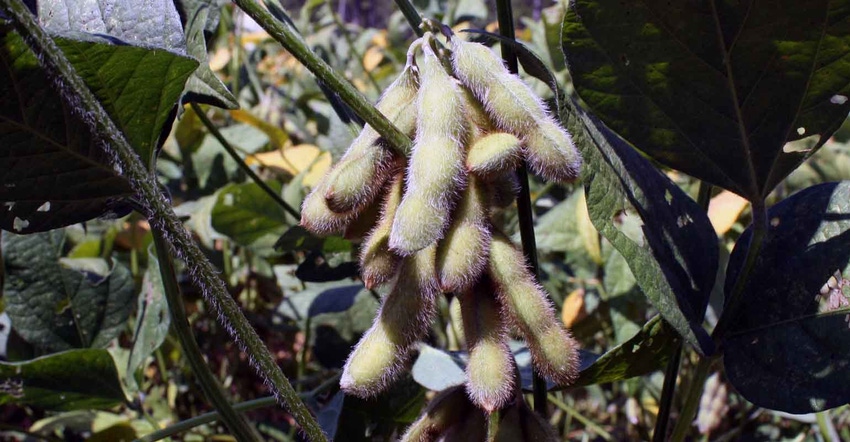
The three strongest predictors of high soybean yield identified in an analysis of 877 entries from the North Carolina soybean yield contest are planting date, maturity group and foliar fungicides.
That’s the message North Carolina State University Extension Soybean Specialist Rachel Vann continues to drive home in field days and grower meetings across the state. Of the three, Vann says maturity group was the single strongest predictor of higher soybean yields, with maturity Group IV or earlier varieties yielding considerably higher than later maturing varieties.
The soybean yield contest and small-plot research in North Carolina confirm the importance of choosing the right planting date and maturity group to maximize yields. Foliar diseases can also limit soybean yields in North Carolina, so foliar disease management is critical.
“Across the state and different regions, planting date emerged as a strong predictor of high yields with planting dates earlier than mid-May maximizing yield in some parts of the state and even earlier than late April in parts of the state with earlier maturing varieties in a high yield situation,” Vann explained at the CHROME Ag Expo Aug. 16 at the Peanut Belt Research and Extension Center in Lewiston-Woodville, N.C.
In most environments across North Carolina, Vann said farmers are seeing maximum yields with planting dates from mid-April to mid-May, and even up to the third week of May. This response varies by region and soil type. With planting dates from mid-June to mid-July, considerable yield declines are seen. Vann’s findings show a 15-bushel yield hit, on average, from planting soybeans in mid-June versus late April through mid-May.

Speaking at the CHROME Ag Expo at the Peanut Belt Research Station in Lewiston-Woodville, N.C., North Carolina State University Extension Soybean Specialist Rachel Vann said Soybean Maturity Group IV or earlier yield considerably higher than later maturing varieties.
There can also be disadvantage of planting too early in some environments.
“We’ve seen in most situations in North Carolina a yield drag of planting before early April. Across the U.S., much emphasis has been placed on the earlier you plant, the more nodes you get, the more vegetative growth you have to drive photosynthesis and ultimately yield. But we’re not seeing that across many environments where we’ve planted very early in North Carolina,” Vann emphasized.
Vann explained that when planting that early, particularly with an early maturing variety, we have seen the plant move into reproductive development by mid-May before maximum vegetative growth rates have been achieved. We think this, in addition to seed quality issues on the backend of the season, contributes to the observed yield drag for soybeans planted before early April in most environments here.
Since 2019, Vann and her team have conducted small-plot research in 15 sites with different environments across North Carolina to determine the best maturity groups and seeding rates to maximize yield and quality. For seeding rates, Vann pointed out that research shows slightly higher seeding rates are needed for earlier maturing varieties, compared to later maturing varieties.
“You need to increase seeding rates as you delay planting. Seeding rates needed to maximize revenue are less than those to maximize yield,” she said.
Vann noted that the small-plot research is in its fourth year. After a fifth hear of data is compiled from 2023, North Carolina State plans to release a grower decision support tool that soybean farmers can use to plug in their planting date and determine their best maturity group and seeding rate to maximize yields based on their environment.
Finally, Vann said the yield contest analysis showed foliar fungicides provided a 5.4 bushel per acre yield advantage on average. She noted that small-plot research in North Carolina confirms that foliar fungicides provide considerable yield protection when disease is present.
“The most robust mechanism to manage foliar disease is through varietal resistance. However, if that is not available, foliar fungicides are an effective disease management tool,” she said.
About the Author(s)
You May Also Like






